Cooperative binding of KLF4, pELK-1, and HDAC2 to a G/C repressor element in the SM22α promoter mediates transcriptional silencing during SMC phenotypic switching in vivo
- PMID: 22811558
- PMCID: PMC3517884
- DOI: 10.1161/CIRCRESAHA.112.269811
Cooperative binding of KLF4, pELK-1, and HDAC2 to a G/C repressor element in the SM22α promoter mediates transcriptional silencing during SMC phenotypic switching in vivo
Abstract
Rationale: We previously identified conserved G/C Repressor elements in the promoters of most smooth muscle cell (SMC) marker genes and demonstrated that mutation of this element within the SM22α promoter nearly abrogated repression of this transgene after vascular wire injury or within lesions of ApoE-/- mice. However, the mechanisms regulating the activity of the G/C Repressor are unknown, although we have previously shown that phenotypic switching of cultured SMC is dependent on Krupple-like factor (KLF)4.
Objective: The goals of the present studies were to ascertain if (1) injury-induced repression of SM22α gene after vascular injury is mediated through KLF4 binding to the G/C Repressor element and (2) the transcriptional repressor activity of KLF4 on SMC marker genes is dependent on cooperative binding with pELK-1 (downstream activator of the mitogen-activated protein kinase pathway) and subsequent recruitment of histone de-acetylase 2 (HDAC2), which mediates epigenetic gene silencing.
Methods and results: Chromatin immunoprecipitation (ChIP) assays were performed on chromatin derived from carotid arteries of mice having either a wild-type or G/C Repressor mutant SM22α promoter-LacZ transgene. KLF4 and pELK-1 binding to the SM22α promoter was markedly increased after vascular injury and was G/C Repressor dependent. Sequential ChIP assays and proximity ligation analyses in cultured SMC treated with platelet-derived growth factor BB or oxidized phospholipids showed formation of a KLF4, pELK-1, and HDAC2 multiprotein complex dependent on the SM22α G/C Repressor element.
Conclusions: Silencing of SMC marker genes during phenotypic switching is partially mediated by sequential binding of pELK-1 and KLF4 to G/C Repressor elements. The pELK-1-KLF4 complex in turn recruits HDAC2, leading to reduced histone acetylation and epigenetic silencing.
Figures
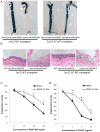
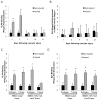

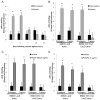
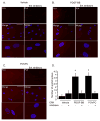
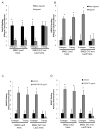
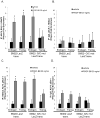
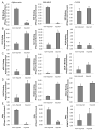
Comment in
-
Modulation of smooth muscle cell phenotype: the other side of the story.Circ Res. 2012 Aug 31;111(6):659-61. doi: 10.1161/CIRCRESAHA.112.277368. Circ Res. 2012. PMID: 22935528 Free PMC article. No abstract available.
References
-
- Chamley-Campbell J, Campbell G, Ross R. The smooth muscle cell in culture. Physiol Reviews. 1979;59:1–6. - PubMed
-
- Owens GK, Kumar MS, Wamhoff BR. Molecular Regulation of Vascular Smooth Muscle Cell Differentiation in Development and Disease. Physiol Rev. 2004;84:767–801. - PubMed
-
- Owens GK. Regulation of Differentiation of Vascular Smooth Muscle Cells. Physiol Rev. 1995;75:487–517. - PubMed
-
- Kawai-Kowase K, Owens GK. Multiple repressor pathways contribute to phenotypic swiching of vascular smooth muscle cells. Am J Physiol Cell Physiol. 2007;292:C59–69. - PubMed
-
- Adam PJ, Regan CJ, Hautmann MB, Owens GK. Positive and negative acting kruppel-like transcription factors bind a transforming growth factor beta control element required for expression of the smooth muscle differentiation marker SM22alpha in vivo. J Biol Chem. 2000;275:37798–806. - PubMed
Publication types
MeSH terms
Substances
Grants and funding
LinkOut - more resources
Full Text Sources
Other Literature Sources
Molecular Biology Databases
Miscellaneous

